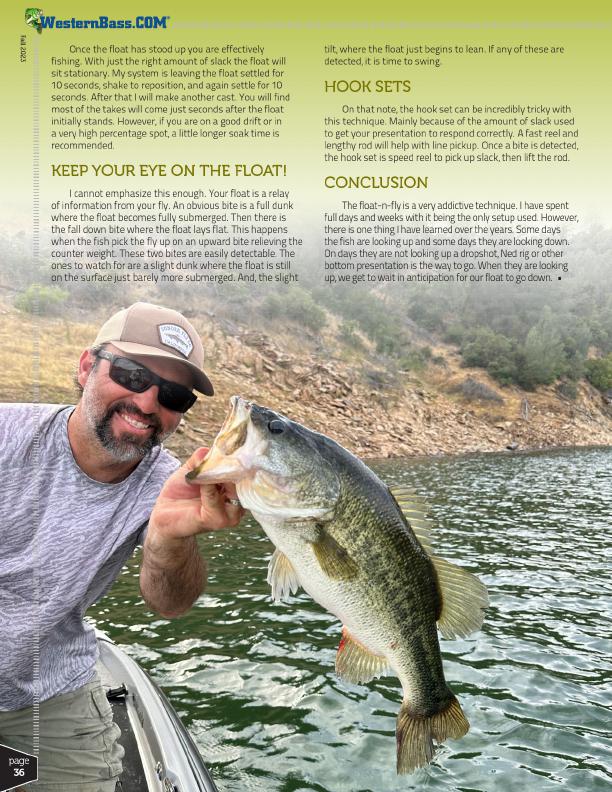
Fall 2023
®
Once the float has stood up you are effectively fishing. With just the right amount of slack the float will sit stationary. My system is leaving the float settled for 10 seconds, shake to reposition, and again settle for 10 seconds. After that I will make another cast. You will find most of the takes will come just seconds after the float initially stands. However, if you are on a good drift or in a very high percentage spot, a little longer soak time is recommended.
KEEP YOUR EYE ON THE FLOAT!
I cannot emphasize this enough. Your float is a relay of information from your fly. An obvious bite is a full dunk where the float becomes fully submerged. Then there is the fall down bite where the float lays flat. This happens when the fish pick the fly up on an upward bite relieving the counter weight. These two bites are easily detectable. The ones to watch for are a slight dunk where the float is still on the surface just barely more submerged. And, the slight
tilt, where the float just begins to lean. If any of these are detected, it is time to swing.
HOOK SETS
On that note, the hook set can be incredibly tricky with this technique. Mainly because of the amount of slack used to get your presentation to respond correctly. A fast reel and lengthy rod will help with line pickup. Once a bite is detected, the hook set is speed reel to pick up slack, then lift the rod.
CONCLUSION
The float-n-fly is a very addictive technique. I have spent full days and weeks with it being the only setup used. However, there is one thing I have learned over the years. Some days the fish are looking up and some days they are looking down. On days they are not looking up a dropshot, Ned rig or other bottom presentation is the way to go. When they are looking up, we get to wait in anticipation for our float to go down. •
page
36